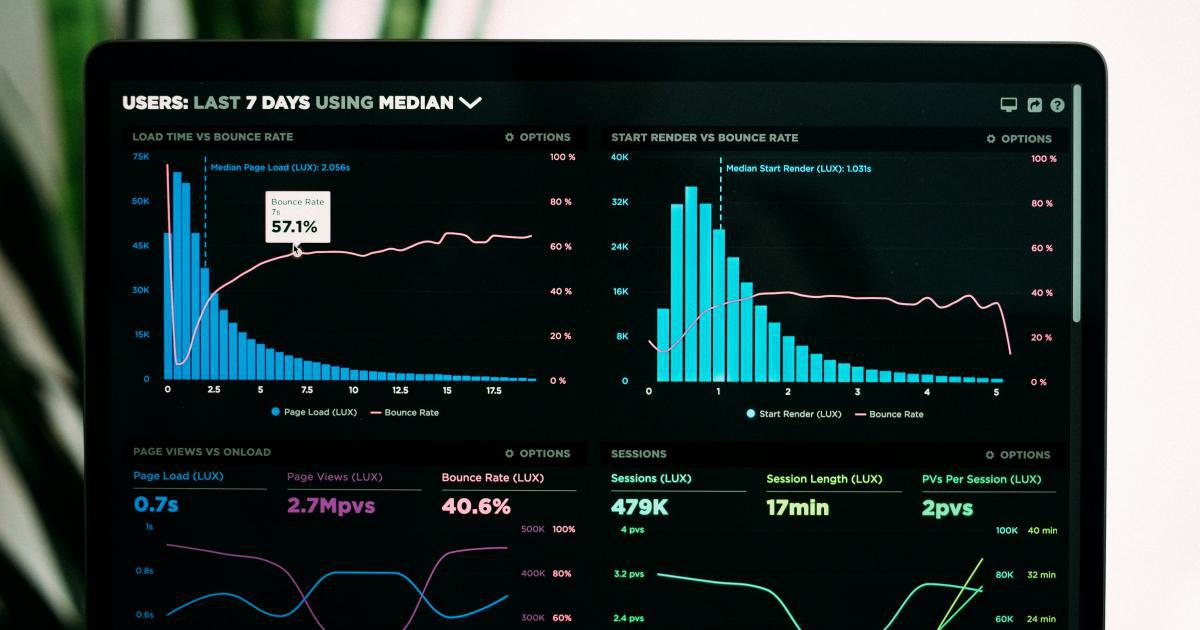How Can Website Conversion Reports Boost Sales?


Understanding the Importance of Website Conversion Reports
In the digital age, having a strong online presence is crucial for businesses of all sizes. Your website serves as a gateway to your products or services, and its effectiveness can directly impact your sales and revenue. One of the most valuable tools in your digital marketing arsenal is website conversion reports, which provide invaluable insights into how your customers interact with your website and ultimately drive your sales.
Website conversion reports are data-driven analyses that track and measure the actions users take on your website, such as making a purchase, filling out a contact form, or signing up for a newsletter. By understanding these conversion metrics, you can gain a deeper understanding of your website's performance and identify areas for improvement.

What are Website Conversion Reports?
Website conversion reports are detailed analyses of the user actions on your website that lead to a desired outcome, such as a sale, a lead, or a sign-up. These reports provide valuable insights into the behavior and decision-making processes of your website visitors, helping you understand:
- Conversion Rates: The percentage of visitors who take a specific action, such as making a purchase or submitting a form.
- Conversion Paths: The steps users take before converting, which can reveal bottlenecks or friction points in the customer journey.
- User Engagement: How users interact with your website, including time spent on pages, bounce rates, and click-through rates.
- Acquisition Sources: Where your website traffic is coming from, such as search engines, social media, or referral sites.
By analyzing these metrics, you can identify opportunities to optimize your website and marketing strategies to drive more conversions and ultimately boost your sales.
The Impact of Website Conversion Reports on Sales
Improving your website's conversion rate can have a significant impact on your sales and overall business performance. Here are some of the ways website conversion reports can boost your sales:
Identify High-Performing Products or Services: Conversion reports can reveal which of your offerings are most popular and driving the most sales. This information can help you focus your marketing efforts on your best-selling items, leading to increased revenue.
Optimize the Customer Journey: By understanding how users navigate your website and where they encounter friction or drop-off points, you can make targeted improvements to the user experience. This can lead to higher conversion rates and more sales.
Personalize the User Experience: Conversion reports can provide insights into the preferences and behaviors of different customer segments. With this information, you can tailor your website content, product recommendations, and marketing messages to better meet the needs of your target audience.
Allocate Marketing Budgets Effectively: Conversion reports can help you identify the most effective acquisition channels, such as search engine optimization (SEO), social media, or email marketing. By focusing your marketing efforts on the channels that drive the highest ROI, you can maximize your sales and marketing budgets.
Continuously Improve and Iterate: Website conversion reports provide ongoing feedback on the performance of your website and marketing strategies. By regularly analyzing these reports and making data-driven improvements, you can continually optimize your website to drive more sales over time.

Analyzing Website Conversion Reports
To effectively leverage website conversion reports to boost your sales, it's essential to understand the various metrics and how to interpret them. Let's dive into the key components of a comprehensive website conversion report.
Conversion Rates
The conversion rate is the primary metric that measures the success of your website in driving desired actions. It's typically calculated as the number of conversions divided by the total number of website visitors, expressed as a percentage.
For example, if your website receives 10,000 visitors and 500 of them make a purchase, your conversion rate would be 5% (500 / 10,000 = 0.05 or 5%).
Conversion rates can vary significantly depending on your industry, target audience, and the specific conversion goal. Understanding your current conversion rate is the first step in identifying areas for improvement and setting realistic goals for boosting sales.

Conversion Paths
Conversion paths, also known as customer journeys, track the steps users take before completing a desired action on your website. By analyzing these paths, you can identify points of friction or drop-off, and optimize the user experience to guide more visitors through the sales funnel.
Common conversion path metrics include:
- Funnel Visualization: A visual representation of the steps in your conversion process, showing the number of users at each stage and the drop-off rates.
- Conversion Funnels: A step-by-step analysis of the conversion process, highlighting where users are most likely to abandon the funnel.
- Pathways to Conversion: The various routes users take to reach a conversion, which can reveal alternative or unexpected customer journeys.
Understanding your conversion paths can help you identify opportunities to streamline the customer journey, reduce friction, and guide more users towards a successful conversion.

User Engagement Metrics
In addition to conversion rates and paths, website conversion reports also provide insights into user engagement, which can significantly impact sales. Some key user engagement metrics include:
- Bounce Rate: The percentage of visitors who leave your website after viewing only one page.
- Time on Page: The average amount of time users spend on a specific page or the entire website.
- Pages per Session: The average number of pages a user visits during a single session on your website.
- Click-Through Rates: The percentage of users who click on a specific link or call-to-action (CTA) on your website.
By analyzing these metrics, you can identify areas of your website that are engaging users and driving them towards conversions, as well as those that may be causing frustration or confusion.

Acquisition Sources
Website conversion reports also provide insights into where your website traffic is coming from, known as acquisition sources. This information can help you understand which marketing channels are driving the most valuable leads and conversions.
Common acquisition source metrics include:
- Organic Search: Traffic from search engines like Google, Bing, or Yahoo.
- Paid Search: Traffic from paid advertising campaigns on search engines.
- Referral: Traffic from other websites that link back to your site.
- Social Media: Traffic from social media platforms like Facebook, Twitter, or LinkedIn.
- Direct: Traffic from users who directly type your website URL into their browser.
By analyzing the conversion rates and sales generated from each acquisition source, you can optimize your marketing efforts and budget allocation to focus on the channels that are driving the most valuable traffic and conversions.

Leveraging Website Conversion Reports to Boost Sales
Now that we've explored the key components of website conversion reports, let's dive into how you can use this data to drive real sales growth for your business.
Identify High-Performing Products or Services
Conversion reports can reveal which of your products or services are generating the most sales and conversions. By focusing your marketing efforts on these high-performing offerings, you can maximize your sales potential.
For example, if your conversion report shows that a specific product has a significantly higher conversion rate than your other products, you can:
Increase marketing and advertising efforts for that product, such as creating targeted ad campaigns or featuring it more prominently on your website.
Analyze the product page to understand what elements are driving the high conversion rate, and apply those insights to optimize other product pages.
Explore opportunities to cross-sell or upsell the high-performing product to customers who have already purchased it.
By identifying and capitalizing on your best-selling products or services, you can drive more sales and revenue for your business.

Optimize the Customer Journey
Website conversion reports can provide valuable insights into the customer journey, helping you identify and address any friction points or drop-off areas that may be hindering sales.
By analyzing your conversion paths and funnel visualizations, you can:
Streamline the checkout process to reduce abandoned shopping carts.
Improve the navigation and layout of your website to make it easier for users to find and purchase products.
Optimize form fields and calls-to-action to encourage more users to complete lead generation or sign-up forms.
Personalize the user experience based on visitor behavior, such as providing relevant product recommendations or tailored content.
Addressing these friction points and optimizing the customer journey can lead to higher conversion rates and increased sales.

Personalize the User Experience
Website conversion reports can also help you better understand the preferences and behaviors of your target audience, allowing you to personalize the user experience and drive more sales.
By analyzing user segmentation data and identifying patterns in user behavior, you can:
Tailor product recommendations and content to individual users based on their browsing history, search queries, or purchase behavior.
Customize the website layout, design, and messaging to resonate with specific customer segments.
Offer personalized discounts, promotions, or loyalty programs to encourage repeat business and higher average order values.
Create targeted email campaigns or retargeting ads that speak directly to the needs and interests of your most valuable customers.
Personalization can significantly improve the user experience and increase the likelihood of a successful conversion, leading to more sales and revenue for your business.

Allocate Marketing Budgets Effectively
Website conversion reports can also help you optimize your marketing budget allocation by identifying the most effective acquisition channels for driving sales.
By analyzing the conversion rates and sales generated from different traffic sources, such as organic search, paid advertising, or social media, you can:
Invest more in the channels that are delivering the highest ROI, such as paid search campaigns or social media advertising.
Adjust your SEO strategy to improve your rankings and drive more high-quality organic traffic.
Explore new marketing channels or tactics that may be untapped, but have the potential to generate valuable leads and conversions.
Reallocate resources from underperforming channels to focus on the most effective acquisition sources.
By aligning your marketing budget with the channels that are driving the most sales, you can maximize the return on your marketing investments and boost your overall sales.

Continuously Improve and Iterate
Effective use of website conversion reports is not a one-time exercise, but rather an ongoing process of continuous improvement and iteration. As your business and market conditions evolve, your conversion optimization strategies should adapt accordingly.
To maintain a sales-boosting website, consider the following best practices:
Monitor Conversion Metrics Regularly: Continuously track and analyze your conversion rates, user engagement, and acquisition sources to identify new opportunities for optimization.
Test and Experiment: Implement A/B testing or multivariate testing to experiment with different website elements, such as layouts, calls-to-action, or product recommendations, and measure their impact on conversions.
Collaborate with Cross-Functional Teams: Work closely with your marketing, sales, and product teams to ensure that your website optimization efforts align with your overall business goals and strategies.
Stay Up-to-Date with Industry Trends: Keep an eye on best practices, emerging technologies, and changing customer preferences in your industry to inform your website optimization efforts.
By embracing a culture of continuous improvement, you can ensure that your website remains a powerful sales driver for your business, adapting to the evolving needs of your customers and the market.

Conclusion
In the digital age, website conversion reports are a invaluable tool for businesses looking to boost their sales and drive sustainable growth. By understanding the key metrics and insights provided by these reports, you can identify high-performing products, optimize the customer journey, personalize the user experience, and allocate your marketing budget more effectively.
By leveraging the power of website conversion reports, you can transform your online presence into a sales powerhouse, driving more valuable leads, conversions, and revenue for your business. Remember, the key to success lies in continuously analyzing, testing, and iterating on your website optimization strategies to stay ahead of the curve and meet the ever-changing needs of your customers.